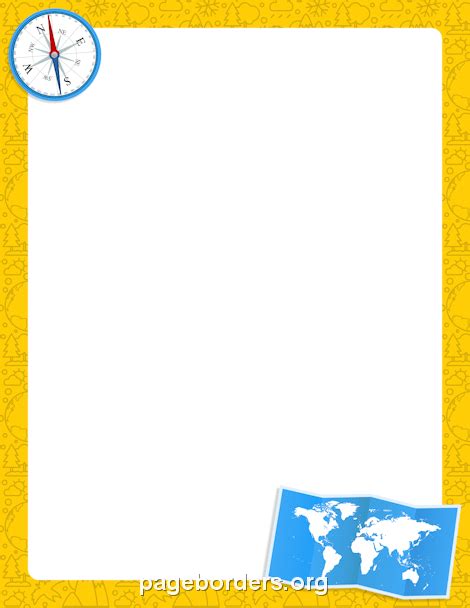In geography, a border is a line that separates two areas, typically countries, states, or provinces. Borders can be natural features, such as rivers or mountains, or they can be artificial, such as walls or fences.

Types of Borders
There are two main types of borders:
- Natural borders: These are borders that are created by natural features, such as rivers, mountains, or deserts. Natural borders are often difficult to cross, which can make them effective barriers to movement.
- Artificial borders: These are borders that are created by humans. Artificial borders can be anything from a simple line on a map to a massive wall. Artificial borders are often used to control movement between two areas.
Functions of Borders
Borders serve a variety of functions, including:
- Dividing political units: Borders are often used to divide different political units, such as countries, states, or provinces. This can help to create a sense of identity and belonging for people living in different areas.
- Controlling movement: Borders can be used to control the movement of people and goods between different areas. This can be done for a variety of reasons, such as security, immigration control, or economic protection.
- Demarcating territorial boundaries: Borders can be used to demarcate the territorial boundaries of different countries or states. This can help to prevent conflict between different political units.
Importance of Borders
Borders are an important part of the world’s political and physical landscape. They play a variety of essential functions, and they can have a significant impact on the lives of people living in different areas.
Common Mistakes to Avoid
When discussing borders, it is important to avoid making the following common mistakes:
- Assuming that all borders are the same: Not all borders are the same. Some borders are natural features, while others are artificial. Some borders are used to control movement, while others are used to divide political units.
- Ignoring the historical context of borders: Borders are not static entities. They have changed over time, and they will continue to change in the future. It is important to understand the historical context of a border in order to understand how it functions.
- Assuming that borders are always negative: Borders are not always negative. They can serve a variety of essential functions, and they can help to create a sense of identity and belonging for people living in different areas.
FAQs
Here are some frequently asked questions about borders:
- What is the difference between a border and a boundary? A border is a line that separates two areas, while a boundary is the area that lies between two borders.
- What is the longest border in the world? The longest border in the world is the border between Canada and the United States, which is 5,525 miles long.
- What is the shortest border in the world? The shortest border in the world is the border between Monaco and France, which is 4,400 feet long.
- How many borders are there in the world? There are over 200 borders in the world.
- What is the purpose of a border? Borders serve a variety of functions, including dividing political units, controlling movement, and demarcating territorial boundaries.
- Are borders always negative? Borders are not always negative. They can serve a variety of essential functions, and they can help to create a sense of identity and belonging for people living in different areas.
